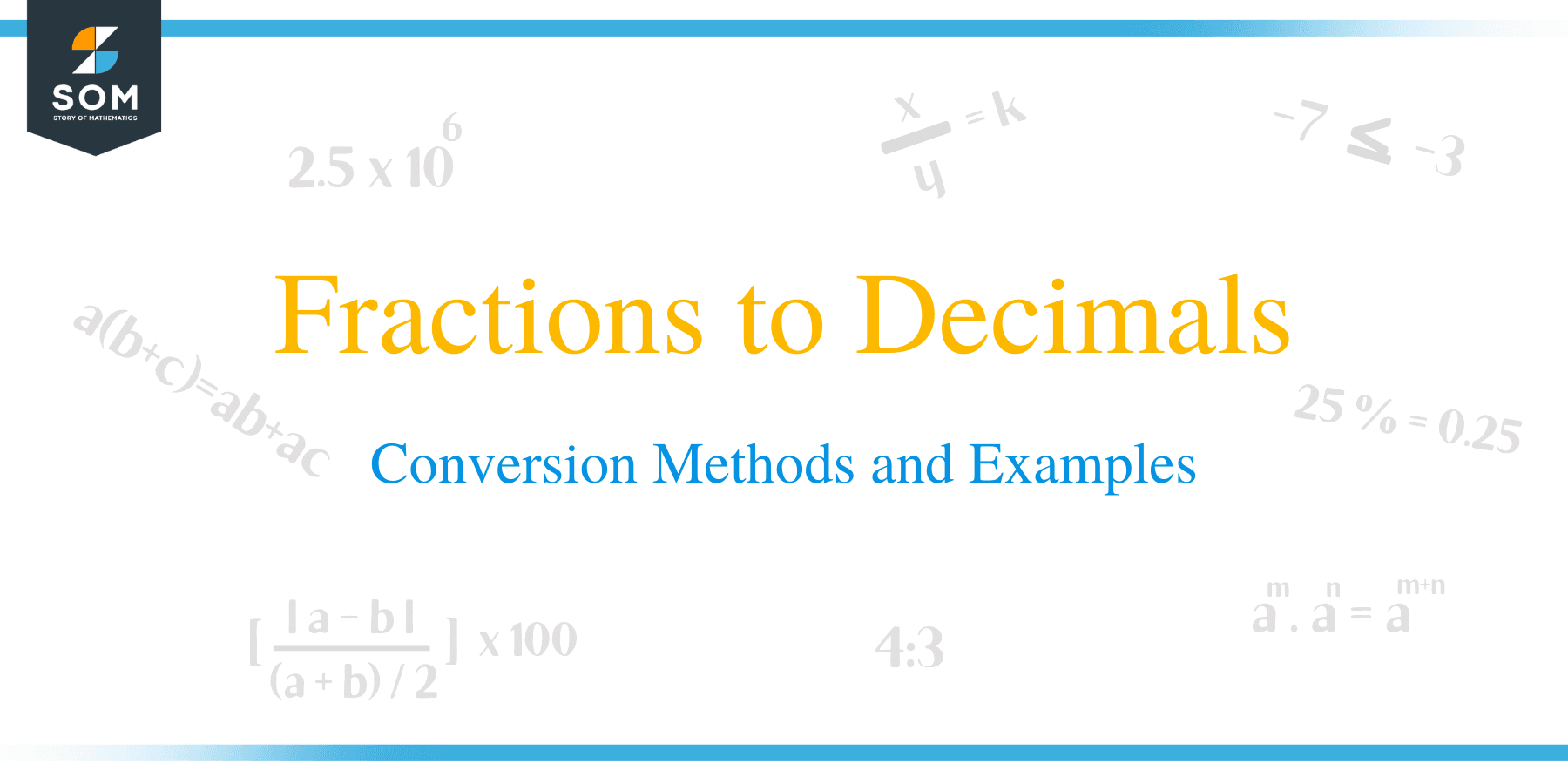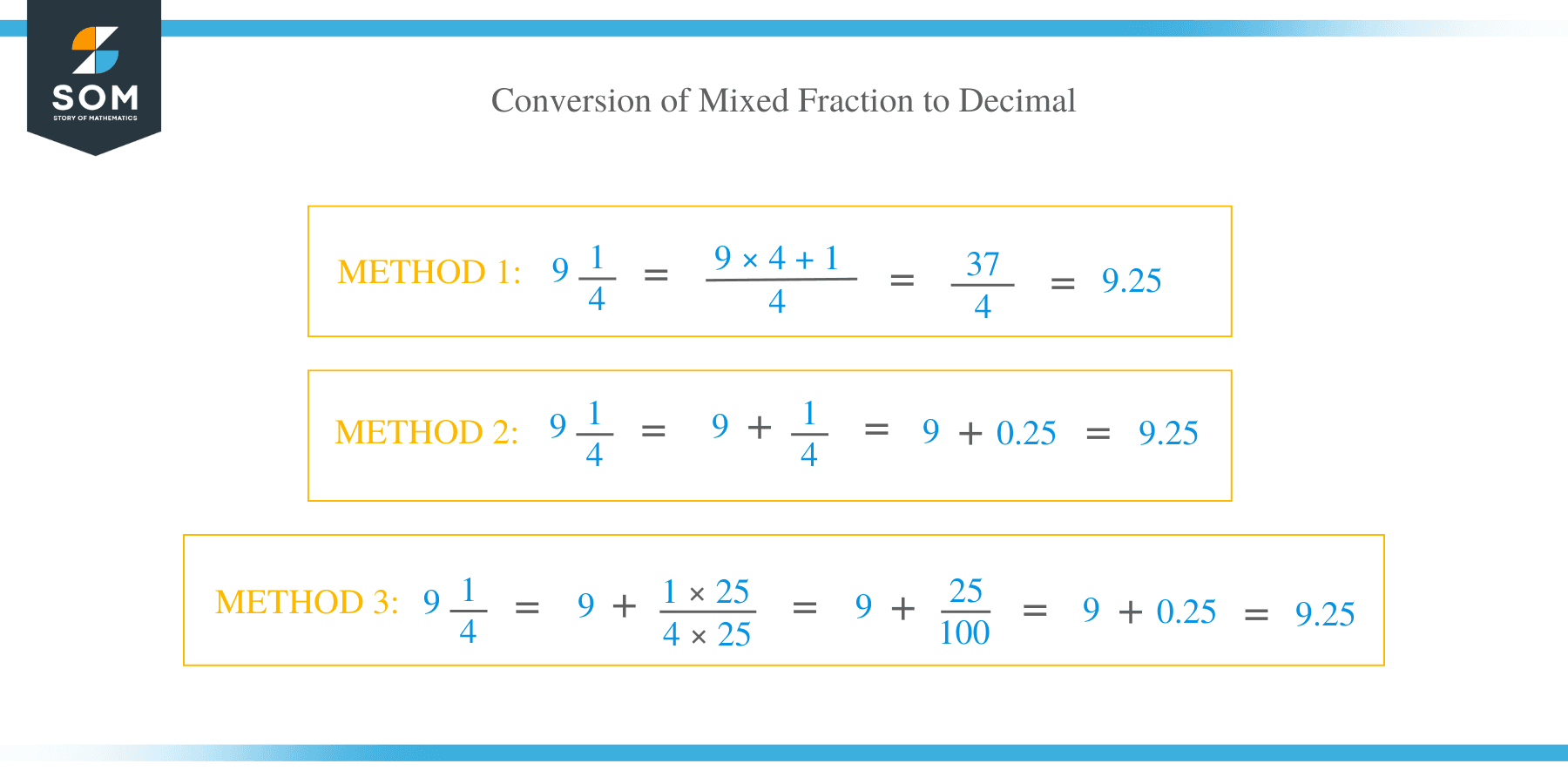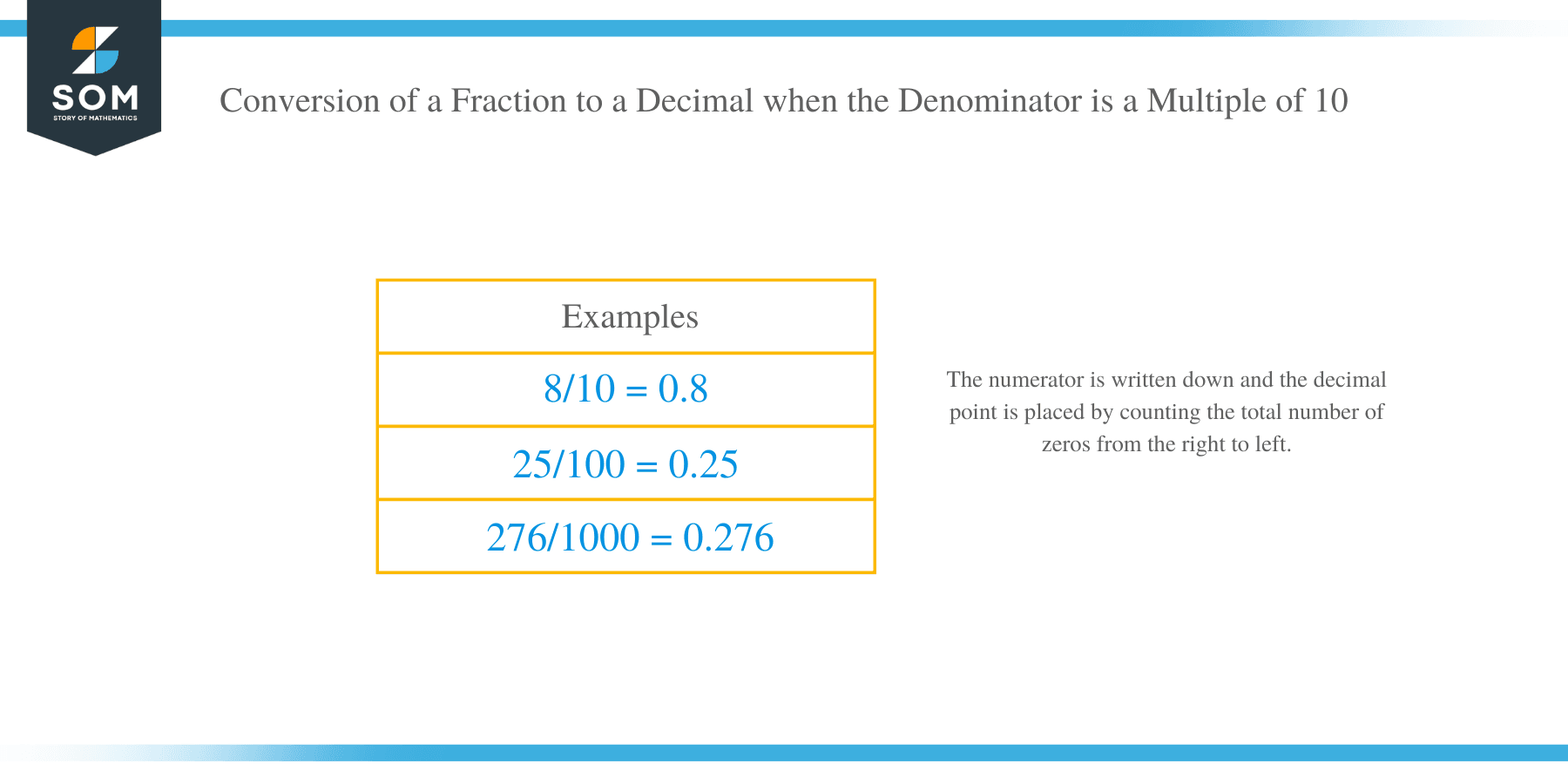- Home
- >
- Fractions to Decimals – Conversion Methods and Examples
JUMP TO TOPIC
Fractions to Decimals – Conversion Methods and Examples
 A fraction is made up of two parts: a numerator and a denominator. It is used to represent how many parts we have out of the total number of parts.
A fraction is made up of two parts: a numerator and a denominator. It is used to represent how many parts we have out of the total number of parts.
Conversion between fractions and decimals can be applied in our daily life when measuring out quantities. A fraction is usually used when determining how much of an ingredient is left in a pack.
How To Convert Fractions to Decimals
Conversion of fractions to decimals isn’t a difficult task, however, to understand the operations, you need to know about decimal division. The most important skill in this topic is also understanding how to deal with terminating and repeating decimals in the final answer.
In fractions, the numerator is an integer above or before the slash and the denominator is an integer after or below the line. The line is usually a division symbol. Therefore, to convert a fraction to a decimal, the numerator is divided by the denominator.
Enough trailing zeros are attached to the numerator so that the continued division continues until the result is either a terminating decimal or a repeating decimal.
To convert fractions to decimals:
- Divide the numerator by the denominator. If a fraction is a mixed number, convert it to an improper fraction.
- Attach enough trailing zeros to the numerator so that you can continue dividing until you find that the answer is either a terminating decimal or a repeating decimal.
- Round off the decimal if the division doesn’t come at an end.
Example 1
- 4/5 as a fraction is calculated as: 4 ÷ 5 = 0.8
- 75/100 =75 ÷100 = 0.75
- 3/6 = 3 ÷ 6 = 5.
Conversion to Decimals When the Answer Is a Terminating Decimal
Sometimes, when dividing the numerator of a fraction by the denominator, the division terminates evenly. The results of this type of division is called a terminating decimal. Below are examples of terminating decimals.
Example 2
2/5 = 2.0 ÷ 5
5 goes into 20 four times, and the decimal point goes in the same place in the top line.
The answer is therefore 0.4.
Example 3
4/25 = 4.00
4÷ 25
25 goes into 40 once, leaving 15 as a remainder.
25 goes into 150 six times exactly.
The answer is therefore 0.16.
Conversion to Decimals When the Result Is a Recurring Decimal
Sometimes, conversion of a fraction leads to a repeating decimal. The decimal recurs forever throughout the same number pattern. For example, to convert 2/3 to a decimal, start by dividing 2 by 3. workout by adding 3 trailing zeros and check the result.
You can notice that, the division continues indefinitely no matter how many trailing zeros you attach to the number 2.
In this case 2/3 = 0.666666…, a bar is normally placed above the repeating integer to show that the number recurs forever.
2/3 = 0.6¯
There comes a case where more than one integer in recur in the decimal number either consecutively or by alternating. For instance, suppose you want to convert 5/11 to a decimal fraction, here is how this problem works out:
5/11 = 0.45454545…..
It is noticed that the pattern repeats every integer 4 and 5. Adding more trailing zeros to the original decimal only string out the pattern indefinitely. So, you can represent as:
5/11 = 0.4¯5
In this case, the bar is placed above both number 4 and 5 to show that these two numbers alternate indefinitely.
Conversion of a Fraction to a Decimal Number When the Denominator Is a Multiple of 10
When the denominator of a fraction is a multiple of 10, 100, 1000, 10000 etc, then conversion from a fraction to a decimal number is a straightforward process.
The numerator is written down and the decimal point placed by counting the total number of zeros from right to left.
Example 4
- 25/100 as a decimal = 0.25
- 276/1000 = 0.276
- 8/10 = 0.8

Example 5
Express the following fractions as decimals:
- 3/10
Solution
Using the above method, we have
3/10
= 0.3
- 1479/1000
Solution
1479/1000
= 1.479
- 71/2
Solution
71/2
= 7 + 1/2
= 7 + (5 × 1)/(5 × 2)
= 7 + 5/10
= 7 + 0.5
=7.5
- 91/4
Solution
91/4
= 9 + 1/4
= 9 + (25 × 1)/(25 × 4)
= 9 + 25/100
= 9 + 0.25
= 9.25
- 121/8
Solution
121/8
= 12 + 1/8
= 12 + (125 × 1)/(125 × 8)
= 12 + 125/1000
= 12 + 0.125
= 12.125
Practice Questions
![]()
Fractions to Decimals of all the Numbers
Below is the list of Fractions to Decimals of various numbers. The solution is just one click away.
3/8 As a Decimal7/40 As a Decimal
3/7 As a Decimal
4 1/8 As a Decimal
9/4 As a Decimal
7/15 As a Decimal
3/40 As a Decimal
1/40 As a Decimal
3/5 As a Decimal
7/5 As a Decimal
11/40 As a Decimal
3/50 As a Decimal
1/8 As a Decimal
17/20 As a Decimal
1/2 As a Decimal
1/11 As a Decimal
8/15 As a Decimal
4/11 As a Decimal

